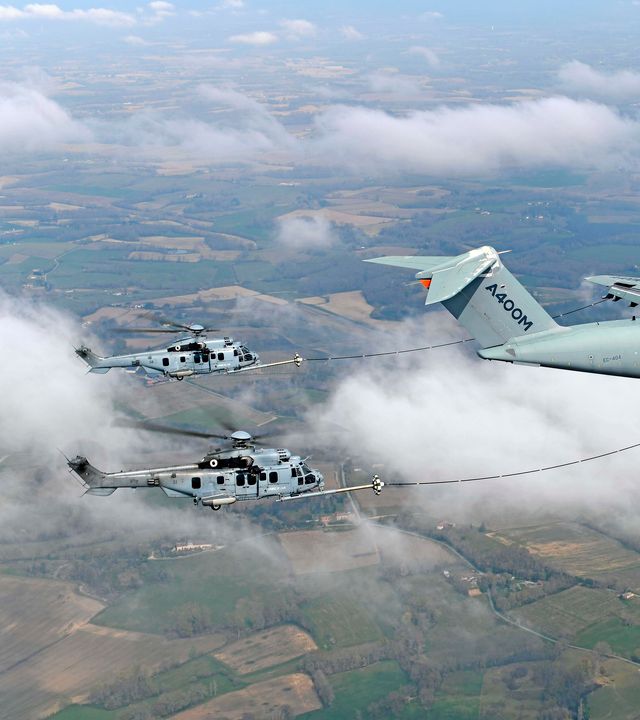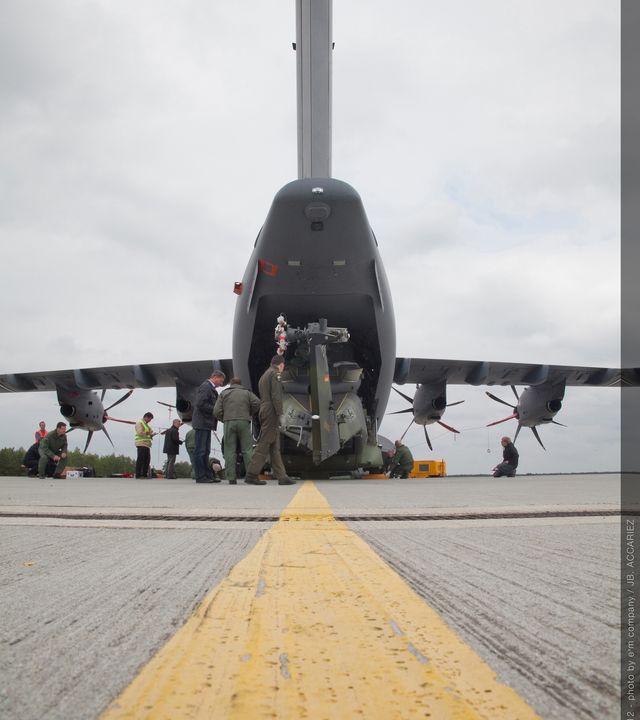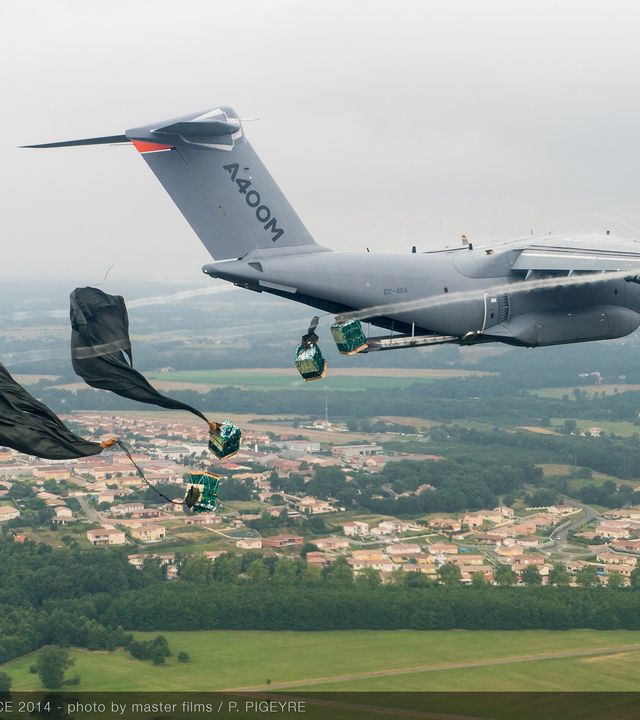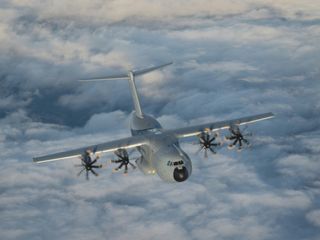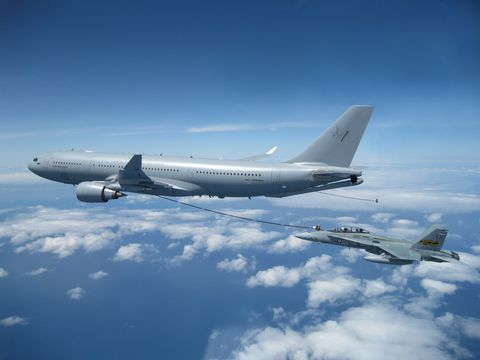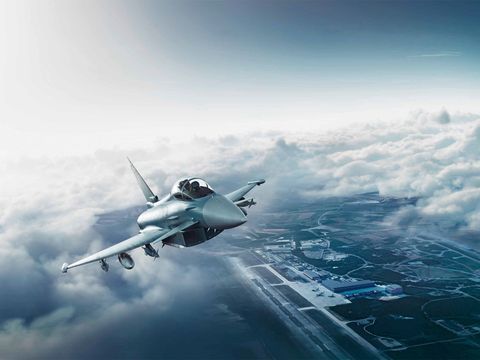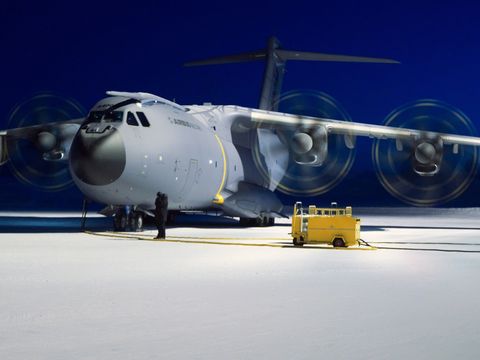A400M
Heavy airlift to the point of need
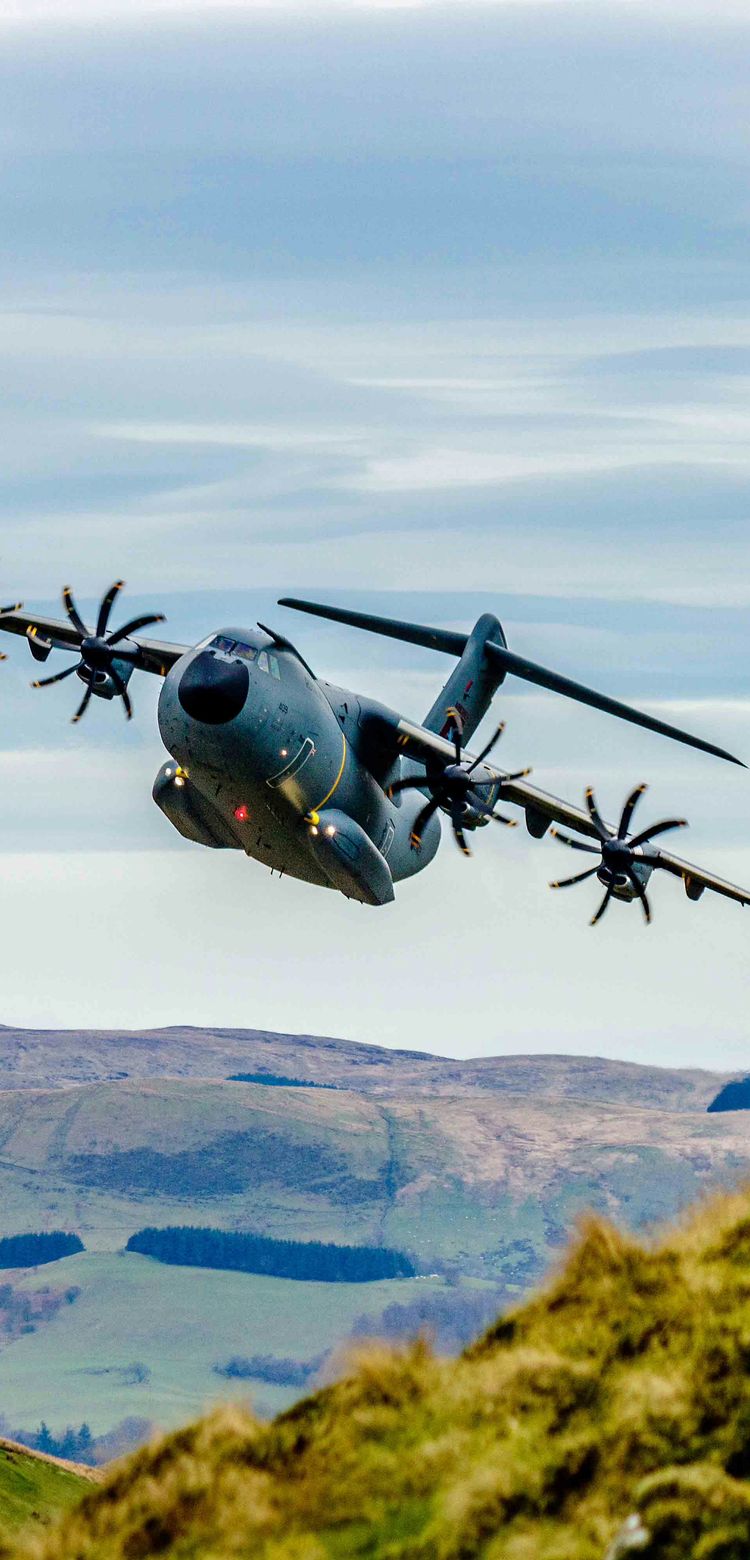
Heavy outsize loads over longer distances
Heavy tactical airlift with strategic range
The A400M is a four-engine turboprop military airlifter that combines the ability to fly to strategic distances carrying loads too heavy or too large for medium airlifters, with the ability to land and deliver those loads on tactical short and unpaved airstrips, where other heavy airlifters cannot operate.
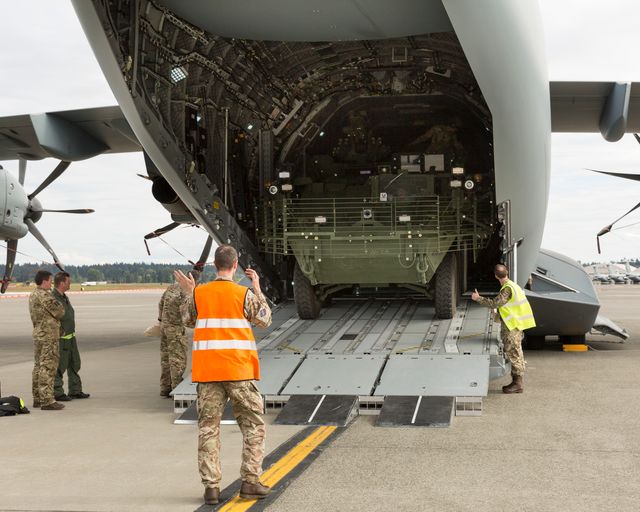

Strategic lift and outsize loads over long distances
The A400M can carry heavy and outsize loads which cannot fit in current tactical airlifters, such as heavy armoured vehicles, helicopters or specialised civil engineering equipment, and fly them at high cruise speeds over long distances in the same way as a jet-engine strategic airlifter.
Thanks to its advanced technologies, including its four turboprop engines, the A400M can fly further and faster, with a cruise speed similar to that of a turbofan aircraft.
Tactical capabilities
Short & Unpaved runways
- Less runway impact than medium tactical airlifters
- Turboprop engines for better Foreign Object Damage (FOD) protection
Survivability & Self-protection
- Low detectability, low vulnerability and high survivability
- Defensive Aids System
- Low Level Flight
Air-to-Air refuelling
- As tanker and receiver
- 51 tonnes of Basic Fuel Capacity
- Successful contacts with Su-30, Hawk, F-18, A400M, Tornado, Eurofighter
- Helicopter AAR
Aerial Delivery
- Certified to airdrop multiple loads up to 25 t
- Able to drop from both high and low altitudes
- 116 paratroops
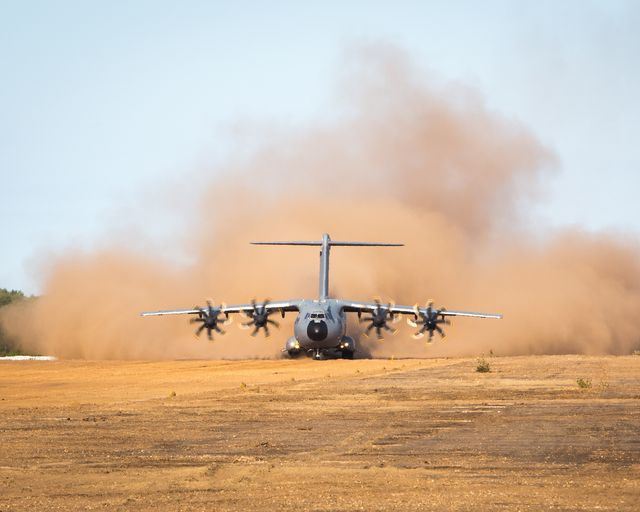

Unique versatility, landing on unpaved airstrips
Existing tactical airlifters can't carry outsize military and humanitarian loads, while current strategic aircraft can handle large loads but lack tactical versatility.
The A400M, with its turboprop engines for better FOD protection and its 12-wheel main landing gear for better weight distribution, can deliver these heavy and oversized loads directly to where they are most urgently needed. This includes landing on short and soft unpaved airstrips inaccessible to any jet-engine airlifter.
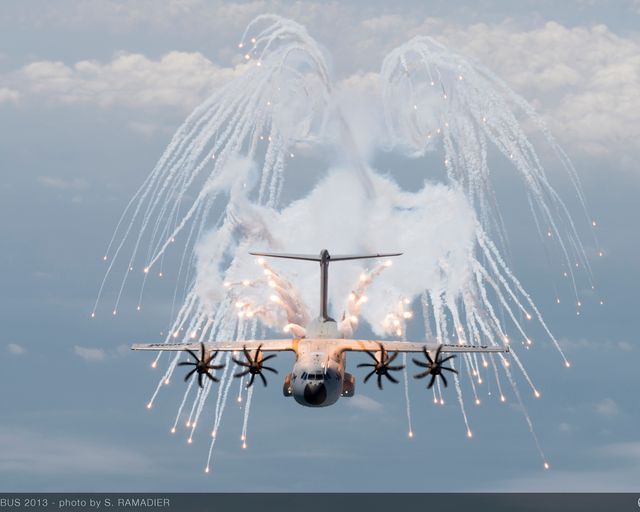

Proven in hostile environments
The A400M offers low detectability with high manoeuvrability (including bank angle up to 120º) , low-level flight down to 150 ft, steep climb and descent, short take-off and landing, and a minimal infrared signature.
Its damage-tolerant controls, armoured cockpit, bullet-resistant windscreens and inert gas in the fuel tanks enhance safety. The aircraft features high survivability incorporating chaff and flare countermeasures, and responsive fly-by-wire controls and extensive defensive aids, making it difficult to detect and target.
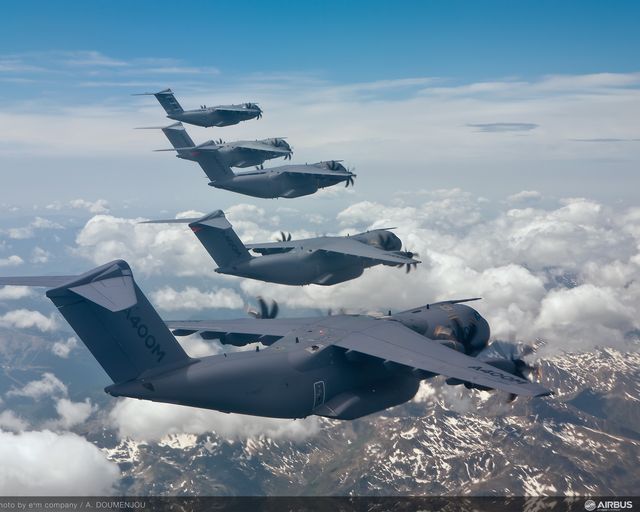

The national asset for a faster and stronger crisis response
With 178 orders from 10 nations and more than 200,000 flight hours, the A400M is becoming the new reference for heavy tactical airlift and strategic reach.
The A400M fulfils the full range of missions required by governments nowadays, performing military transport missions both strategic and tactical, for troops, loads and vehicles, enabling peace/order keeping missions after a natural disaster.
The latest A400M news
In the spotlight
-
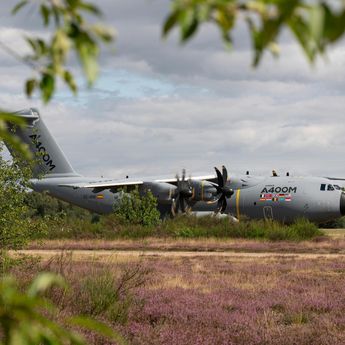
Airbus A400M: Landing where others can't to deliver more aid
Web Story
Defence
A400M tests boost unpaved capability, unlocking humanitarian aid delivery and access for Special Operations missions on soft, short grass strips. Learn how -
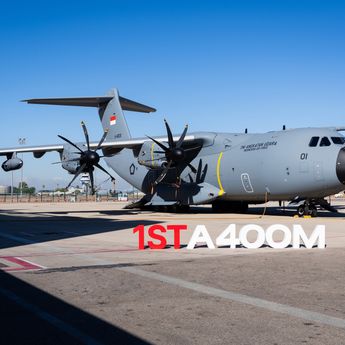
Airbus delivers first A400M to Indonesia
Press Release
Defence
-
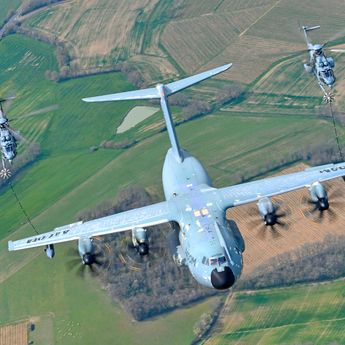
Airbus A400M/H225M: A winning duo
Web Story
Helicopters
-
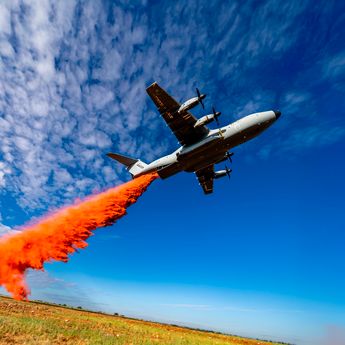
Airbus A400M Firefighting Kit completes a successful test campaign in France
Press Release
Defence
-
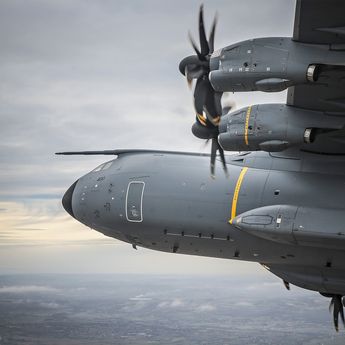
Preparing the Airbus A400M for tomorrow
Web Story
Defence
The A400M around the world
Image Gallery






